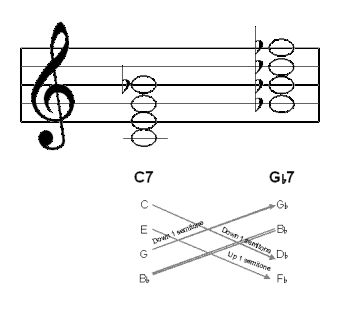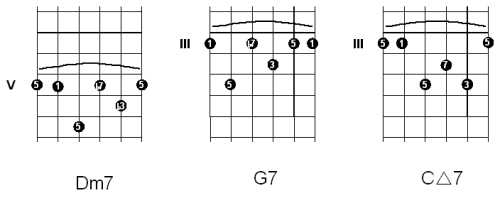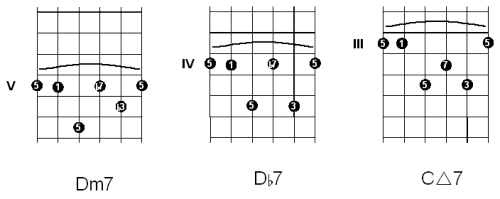
A dominant 7th type hchord can be substituted by the dominant 7th chord whose root is an interval of an augmented 4th/diminished 5th (6 semitones, or 3 whole tones, hence the name 'tritone substitution') away from the root of the original chord.
For example, C7 could be substituted by Gb7, and vice versa (notice how close the notes of the substituted chord are to the notes of the original chord):

This is a very useful device to employ for chord sequences moving in a cycle of 4ths, for example:

By applying tritone substitution you can arrive at the following sequence. Here the substitute chords create much smoother voice leading, resulting in a more pleasing motion in the chords:

To show another use of tritone substitution, consider a common fingering for a ii-V-I chord progression.
For this example, we'll use the key of C major with a progression moving from Dm7 to G7 to C 7:
7:

By substitutuing the G7 chord with a Db7 chord, notice how the root notes of the chords move steadily down the 5th string, one semitone at a time:

As a substituted chord's root note is not diatonic to a key, it cannot be classified as a secondary dominant chord. Secondary domainants are covered in a separate tutorial.
How useful did you find this tutorial?